Davidoff Art Initiative apoya el arte contemporáneo caribeño y a sus artistas, contribuye al desarrollo de las organizaciones artísticas de la República Dominicana, fomenta la difusión de conocimientos y experiencias sobre el arte contemporáneo y promueve el compromiso cultural entre el Caribe y el resto del mundo. Art Initiative materializa, por encima de todo, el deseo de Davidoff de retornar parte de lo recibido a la comunidad cultural de la República Dominicana, donde elabora gran parte de su producción y residen muchos de sus empleados, ofreciendo oportunidades y reconocimiento al arte y la cultura caribeñas y consolidando el compromiso de la compañía a largo plazo con el arte, la artesanía, la comunidad y la calidad. El programa global de la Davidoff Art Initiative se concentra en cuatro áreas: Davidoff Art Residency, Davidoff Art Dialogues, Davidoff Art Grants y Davidoff Art Editions.
Los artistas que vivieron la experiencia de trabajar en la residencia 2015 de Davidoff Art Iniciative comparten sus impresiones sobre el interesante programa que acaba de finalizar en esta entrevista para Dominicana en Miami.
1. How did you get to be part of this program?
I was nominated by Aaron Cezar, founding director of Delfina Foundation in London, and subsequently selected by the Davidoff International Advisory Council, which includes Rocío Aranda-Alvarado of New York’s El Museo del Barrio; Dominique Bluhdorn of the Altos de Chavón Cultural Center Foundation; Hans-Kristian Hoejsgaard, CEO and board member of the Oettinger Davidoff AG; Dominican art historian and Estudio del Sur founder Sara Hermann; New York Based, Budapest-born writer and researcher András Szántó, who is also chief consultant to the Davidoff Art Initiative; and the Guggenheim UBS MAP curator for Latin America, Pablo Léon de la Barra.
2. How was your experience in participating in the Davidoff International Residency Program?
It was absolutely invaluable. You see, I partly from Puerto Rico but had never visited the Dominican Republic. It’s strange how the Islands of the Caribbean are so close, and yet cut off from each other. The greatest thing about the residency was getting to connect with such a close culture that I had never really known until now.
3. Could you share a story of what happened during your time in the DR?
I used the residency as a research trip. More than actually produce work, I was interested in exploring ideas, taping into the artist community, establishing linkages between Puerto Rico and the Dominican republic, and creating a base to build on in the future. To be honest, I spent most of my time evading the studio and trying to immerse myself in the day-to-day life of DR and it’s many milieus.
4. Could you please tell me more about the work that you’ve done during this time in the residency in Altos de Chavón?
Again, I spent most of my time doing research/connecting the dots. For me, it was more of a scoping trip. But I also did so some very specific work, which involved adapting caribbean carnival costumes into costumes for a play I’m working on in Kuwait. Separately, with Nuria Montiel, one of the other artists in residency, we held a workshop called “conciertos ficticios” in conjunction with La Escuela de Diseño de Chavón. It was workshop combining our respective interests in a latin american graphic tradition/printmaking and public intervention. Borrowing the formate of the music street poster, we advertised fake concerts with titles,dates or graphic information that somehow resonate with social and political struggles.
5. Which memory of the country do you take with you after this time in the DR?
Memories shared with the people I met there: I was very impressed by how active and involved the artist community is; ie. Engel Leonardo, Laura Castro, Oliver Rivas, Maximilaino de Castillo, Claudio Almonte etc. Though they’re not all even visual artists, there’s solidarity and support between this group of creatives which says a lot about the value held for art.
6. How would you evaluate the artistic scene in the DR?
Self determined, invested, diligent and tenacious! I felt inspired by how active and involved the artistic scene is in the Dominican Republic is. It reminded me a lot of Puerto Rico. Whether or not with support, the artistic scene is adamant and for the most part manage their own careers.
7. What are your plans after the completion of the residency program?
To return as soon as possible!
NURIA MONTIEL
1. Cómo formas parte de este programa?
En mi caso fui nominada por el artista y educador mexicano Pablo Helguera. Como el resto de las artistas que formamos parte de esta primera edición, fui seleccionada por Davidoff International Advisory Council, a partir de mi portafolio e interés personal por realizar una residencia artística en R.D.
2. ?Cómo fue tu experiencia en el programa de Residencia Internacional de Davidoff?
Participar en el programa me brindó la posibilidad de visitar por primer vez la República Dominicana. Desde hace tiempo tenía muchas ganas de visitar la región de las islas del Cribe por la músical y el baile popular.
Confieso que viajar ha sido siempre una de mis más grandes pasiones. De tal forma que desde el arranque de mi trayectoria me he propuesto emprender experiencias de viaje que sean entendidas como arte en si mismas. Hablo del tipo de viajes que implica tomar riesgos profundos que trasforman la manera en que percibimos, entendemos y hacemos en el mundo. Pero también hablo de generar en el camino una metodología de aprendizaje, de amistad, generosidad y diálogo entre individuos de distintas culturas.
Quizá soy un poco romántica, pero sigo pensando que al estar inmersa en un lugar ajeno, bajo los influjos fugaces de la curiosidad y el asombro, soy capaz de reconocer mi propia cultura desde una nueva perspectiva. En este sentido aunque R.D. es esencialmente distinta a México, la encuentro cercana en muchos sentidos culturales y geográficos, que me hacen regresar a mi país con una posición más crítica. No sólo frente a los conflictos observados en la isla, sino también frente a los propios que ahí vi reflejados; un pasado y presente marcado por violentos contrastes económicos, sociales y raciales; por conflictos territoriales que aún son consecuencia del colonialismo, intervenciones extranjeras, corporaciones transnacionales, turismo, corrupción y pérdida de memoria colectiva. Estos conflictos observados aún desde la superficie despertaron entre el grupo de artistas con las que compartí la vida diaria en Altos de Chavón, intensas reflexiones sobre la posibilidad de trasformar esta realidad a partir del arte, la educación, las relaciones de amistad y afecto entre individuos procedentes de distintos contextos. Cada una de las artistas desde su propia perspectiva generó preguntas con su trabajo que invitan a imaginar alternativas para una vida más digna y placentera para todos.
3. Puedes compartir alguna anecdota de lo que viviste en República Dominicana?
Como mencionaba antes para mi viajar implica cruzar los propios límites en busca de expandir el conocimiento sobre el mundo. En este sentido durante mi residencia procuré sumergirme dentro de la cultura dominicana, que desde el comienzo noté se encontraba fuera de los confines de Casa de Campo. Tras mis andanzas pude acercarme a la cultura del Cibao y a la de los bateyes cercanos a la Romana. Las mejores experiencias fueron aquellas que dieron como fruto relaciones de amistad, cariño y recíproca generosidad.
En un principio mi pareja Diego Espinosa y yo nos dejamos llevar por la güira como nuestra guía al ritmo del merengue y la bachata. En Santiago y Santo Domingo, vagamos en busca de artesanos de güiras profesionales y de músicos populares con quienes pudiéramos aprender sobre el instrumento dominicano. En el transcurso fuimos a memorables conciertos de merengue típico, pero sobre todo conocimos a dos grandes artesanos Büty Güira y Güillermo Güira con quienes colaboramos haciendo dos variaciones del instrumento tradicional.
Los últimos días de mi estancia coincidieron con las festividades de Semana Santa. Y gracias a la generosidad de Daniel Beltrán y su familia, quienes son dominicanos de raíz haitiana originarios del Batey Cacata, pude despedirme fascinada con las festividades del gaga, persiguiendo el sonido de las percusiones y el baile de los pañuelos con todo su poder africano.
4. Puedes contarme más sobre el trabajo que realizaste durante tu residencia en Altos de Cavón?
Como comentaba el primer mes trabajé en colaboración con Diego Espinosa, quien es percusionista, desarrollando una pequeña investigación sobre la güira. Nos pareció que este instrumento dominicano –que algunos piensan proviene del guayo taíno– era un buen punto de partida para aprender sobre el sincretismo cultural ocurrido en el país desde la época de la colonia. Por otra parte nos interesaba aprender sobre la güira en conversación con los artesanos locales que las fabrican y los músicos populares que las tocan. Logramos hacer dos güiras modificadas en su forma y textura tradicional. Sin embargo el proyecto culminará con una pieza que aún estamos por componer y ojalá podamos mostrar en R.D. en un futuro cercano.
Por otro lado me interesé por conocer de cerca la cultura del tabaco y su proceso de fabricación desde la voz de quienes trabajan a diario con la planta. Davidoff me brindó la posibilidad de visitar su fábrica y entrevistar a los trabajadores en cada una de las etapas de la elaboración de los puros. De esta visita tengo una serie de entrevistas por transcribir y editar y una hermosa colección de hojas de tabaco de una gran diversidad de colores, texturas, tamaños y formas. Como en el caso del proyecto de las güiras, aún es una pieza inacabada, de la cual tengo bastante material para jugar.
5. Qué recuerdo del país te llevas luego de esta experiencia?
Apenas hace unos días que regresé a mi casa. Aún me siento asimilando los recuerdos acumulados. Pero puedo decir que desde el camino al aeropuerto, mirando el mar desde la ventana pensaba en la forma de mantener vivas las relaciones que se sembraronen este tiempo a pesar de toda el agua que nos separaría. Hay que continuar las conversaciones iniciadas. Tres meses fueron tiempo suficiente para enamorarme del lugar y su gente. Sin embargo tan sólo fue una probadita que me deja el antojo de explorar y conocer a profundidad la isla, visitando regiones que no conocí como la Bahía de Samaná, Barahona y al otro lado de la línea hacia Haití.
6. Cómo evalúas el mundo del arte en República Dominicana?
Cargada de energía para generar resonancias dentro y fuera de la isla, generosa comprometida y crítica con su propia realidad. Me fui con las ganas de estar más tiempo en Santo Domingo donde sucede gran parte de la actividad cultural. Sin embargo me voy con el ánimo y el deseo de entablar diálogos más íntimos con los artistas que conocí durante la residencia como Raquel Paiewonsky, Pascal Meccariello, Laura Castro, Engel Leonardo, Julianny Ariza y la cineasta Laura Amelia Guzmán. Con Laura Amelia tuve el privilegio de ver una retrospectiva de los extraordinarios dibujos de Nadal Walcott, de quien me quedé fascinada y con las ganas de conocer. Fue breve el tiempo de la residencia para generar colaboraciones entre nosotros, pero ahora toca estrechar los vínculos sin perder el contacto. Yo espero recibir pronto en mi casa artistas dominicanos y haré todo por regresar.
7. Cúales son tus planes luego de completar este programa de Rsidencia?
Aún me queda digerir, terminar de dar forma y editar el material generado durante mi estancia en R.D. Pero a corto plazo estoy planeando un evento en la Ciudad de México para compartir mis experiencias de viaje con mi comunidad. Se me antoja mostrar las piezas realizadas, compartir la información reunida, preparar un sancocho y con romo y música en vivo al ritmo de un perico ripeao bailar hasta que nos de la madrugada.
CATHLEEN MOOSES
1. How did you get to be part of this program?
I had worked extensively on community projects especially in Latin America during my early twenties. From 2004-2009 my summers were dedicated to organizing informal artist residencies and collaborating with grassroots projects in Mexico, El Salvador and Argentina. I taught printmaking in the Dominican Republic in 2008 and coincidentally stayed on a tobacco farm for two weeks. In 2014, shortly after completing my graduate studies at the Yale School of Art, I was nominated by Pablo Helguera and selected by the Davidoff International Advisory Council. All of these previous experiences made me especially interested in participating in the Davidoff International Residency Program.
2. How was your experience in participating in the Davidoff International Residency Program?
The opportunity to focus on my work in this environment has brought new aspects of my practise to the surface. Our studios are situated in one of the largest concentrations of wealth in the Caribbean. The extreme economic disparity in the Americas is not new to me; growing up in a working class and immigrant family in Chicago and as an artist primarily based in New York City, I have learned to navigate some of these distinct realities. Though here in Casa de Campo it becomes more black and white, considering how access is granted to enter into the different areas or communities. Also being part of the initial group of artist to be situated in Altos de Chavón obviously creates situations that couldn’t have been anticipated, but the Davidoff Art Initiative team and the staff at Escuela de Diseño all were incredibly supportive in helping me following through with my various goals.
3. Could you share a story of what happened during your time in the DR?
Crossing the border from Jimani to Malpasse. Although I was excited to be in the DR again, I became increasingly interested in the DR’s relationship to Haiti. My partner was with me and from the outset of planning this trip we were strongly discouraged to make the crossing, as the only stories we heard were of militarization and troubles at the border. After communicating with a wide range of people on the Haitian side, we felt confident in crossing the border and that making the trip was important to gain a better understanding of the island and the two countries which are so clearly connected. The trip in total was about 10 hours from Casa de Campo to Port-au-Prince. Driving through the Dominican landscape help us to understand the situation we were in and experiencing the border crossing for ourselves demystified the simple act. Once in Port-au-Prince we were able to meet with great artists and hope to return in the near future.
4. Could you please tell me more about the work that you’ve done during this time in the residency in Altos de Chavón?
Letting the condition of Altos de Chavón and especially the placement inside Casa de Campo inspire the work was interesting to me. I was biking around in the beginning of the residency letting the new environment affect me, I felt the great push of borders, materialized by the fences and gates of this already gated community. This became the primary project – directly tracing the gates and fences on the island, the Jimani/Malpasse border gate, fences in major cities as well as those of Casa de Campo. Requesting permission to make these gate drawings has become an opportunity for informal conversations with homeowners and security guards. By printing the negative spaces of these traces with local house paints on layers of glass, I was able to scrape away the paint and develop the image in that way. The works on paper were also built through a process of layering, where multiple fences and gates would mix in the surface. The work here is in no way meant to be an end object, but an investigation that I hope to further develop back in New York as well as upon a return to the island.
5. Which memory of the country do you take with you after this time in the DR?
The ocean’s horizon; The Worlds Smallest Puppet Show for No Audience at All in the street at night in Santo Domingo; seeing the incredible Gaga costumes in the batey for Semana Santa and getting to dance there–realizing that there can be celebration in conditions of extreme economic poverty and social repression, and being reminded that there is far too much complacency that tolerates human exploitation.
6. How would you evaluate the artistic scene in the DR?
It seems to be a young and enthusiastic scene trying to situate itself between being true to the history of the island and reaching out towards a more international crowd. During the residency Raúl Miyar was so kind as to give my partner Troels Steenholdt Heiredal and I the opportunity to teach a two day workshop; the students were very engaging and open to experimenting with our approach to creation and we both hope to come back to elaborate on the concepts.
7. What are your plans after the completion of the residency program?
I hope to further develop the work started at the residency and intend to reconnect with my artist friends in New York and share the experiences I had here. Also it would be great to be able to meet with the Dominican artists that are visiting New York in the near future.
MATHILDE ROSIER
1.How did you get to be part of this program?
We were nominated by curators with who we worked previously
2.How was your experience in participating in the Davidoff International Residency Program?
Enriching and unexpected
3. Could you share a story of what happened during your time in the DR?
Going to a batey, where sugar cane workers live, in the middle of the plantations, at night, and finding the sky full of so many more starts then anywhere else on the island, because they did not have electric light there.
4, Could you please tell me more about the work that you’ve done during this time in the residency in Altos de Chavón?
Painting in the studio, enjoying the different range of light and colors and for my work as a performer, studying the dismissed African heritage as well as the relation with Haiti.
5. Which memory of the country do you take with you after this time in the DR?
Very beautiful nature and silent social violence
6. How would you evaluate the artistic scene in the DR?
My stay in the country was too short to evaluate anything seriously. And evaluating would simply mean comparing with where I come from, it is not especially interesting for me to think this way.
7. What are your plans after the completion of the residency program?
I have to travel through Europe for different projects.
SOLEDAD SALAME
1. How did you get to be part of this program?
I was nominated by Irene Hofmann, Phillips Director and Chief Curator , SITE Santa Fe, and selected by another jury panel formed by :Rocio Aranda Alvarado, Sara Hermann, Andras Szántó, Pablo Léon de la Barra, Hans-Kristian Hoejsgaard, Dominique Bluhdorn.
2. How was your experience in participating in the Davidoff International Residency Program?
Overall was a good learning experience, with a few trips made to the outside of Chavon and with the interaction of the School and staff, the use of different studio facilities that are part of the school and Chavon.
3. Could you share a story of what happened during your time in the DR?
I met two young students from the school that were interested in collaborating with my projects I want to start training one of them here (Carlos Thomas) in Balimore in printmaking because, he has the potential to become a master printer with the help of the school of Art and Design in Chavon and manage the printmaking program there. I also collaborated with a very smart young artist from first year,(Adriel Vargas) that needs to further his career in audio design.
And as a fantastic rewarding experience El Teatro Danzante Popular of Nerieda Rodriguez, in Santo Domingo, agreed to perform for my piece,“Are You Listening?” .
4. Could you please tell me more about the work that you’ve done during this time in the residency in Altos de Chavón?
I was able to develop a project about communication, called “Are you Listening?” and create a new sound piece,based on The Davidoff Industry, and integrating this with dance performance in collaboration with Teatro de Danza Popular de Nereida Rodriguez.
b-This project also has two editions .
c-I also collaborated with Arlene Alvarez director of The Archeological Museum in Altos De Chavon.
This is a project with a CB antenna, bringing the surroundings communities to Chavon.This project needs to be continued.
d- I dictated a course in Solar Etching and Relief Printing .It was very successful and many of the artists want to continue in this line of work. So I restored and taught artist Carlos Thomas, how to keep the printing press bed and roller in good condition for future projects.
e-I made several print proposals
5. Which memory of the country do you take with you after this time in the DR?
A happy feeling because of new achievements and of peoples generosity and enthusiasm, but troubled by the large economic differences.
6. How would you evaluate the artistic scene in the DR?
Well I will have to come back for this chapter. Even though I met some of the artists( of prior residencies) and gallerists , I wish the residency could be expanded to spend more time out of Chavon ,in Santo Domingo or in other parts of the country, to accomplish a better understanding of the real life and of its history and culture.
7. What are your plans after the completion of the residency program?
Will finish working with all the raw material I got during these 10 weeks in The Dominican Republic. Hopefully will come back and finish a few more projects.

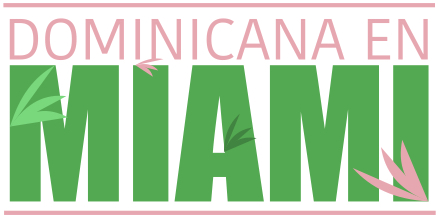

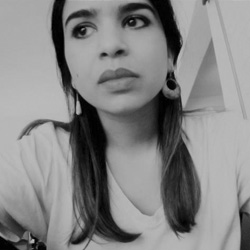
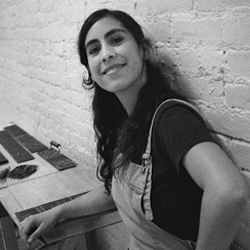
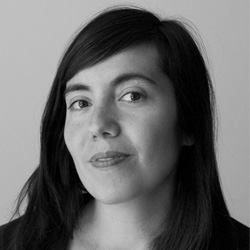
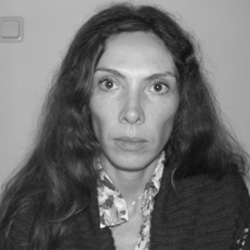
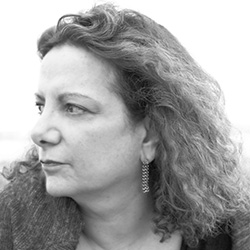





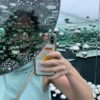
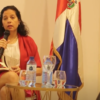


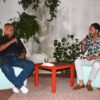


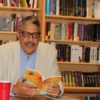
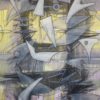
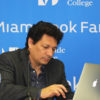


Comentarios